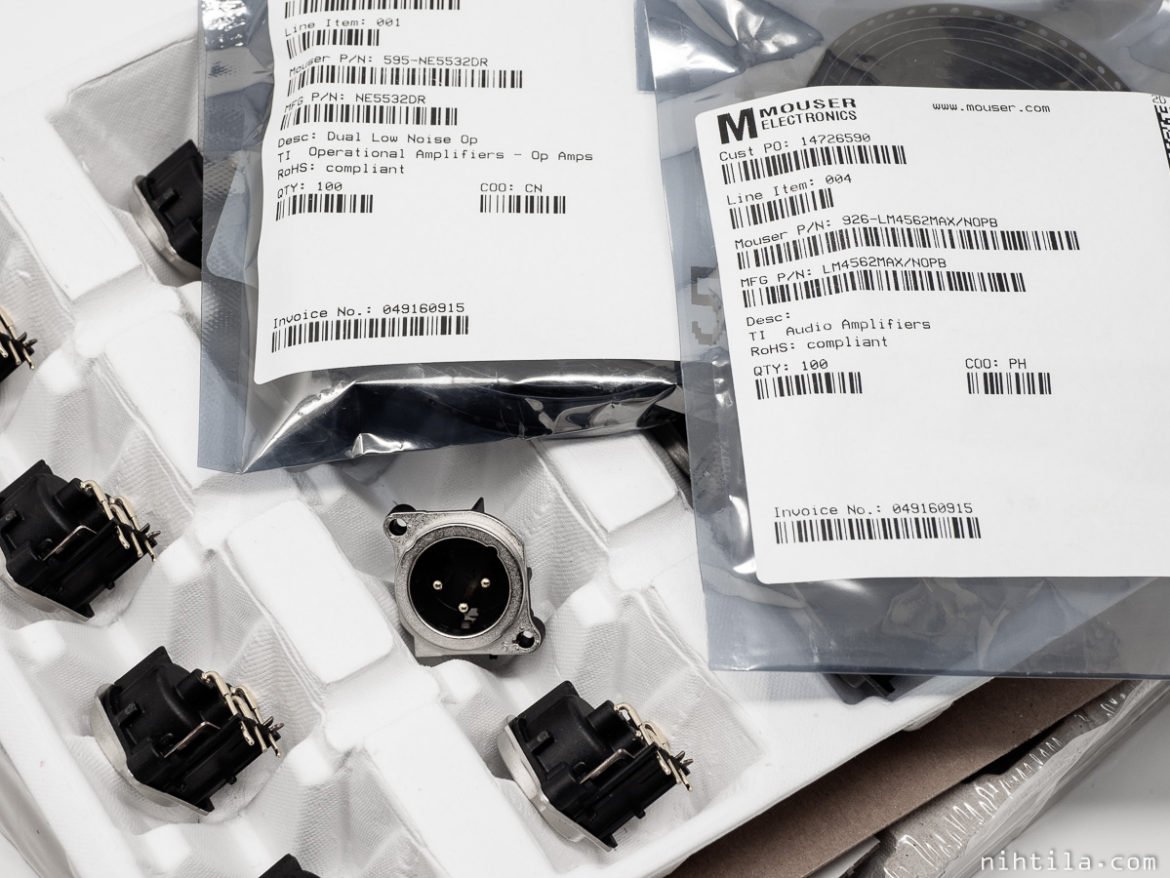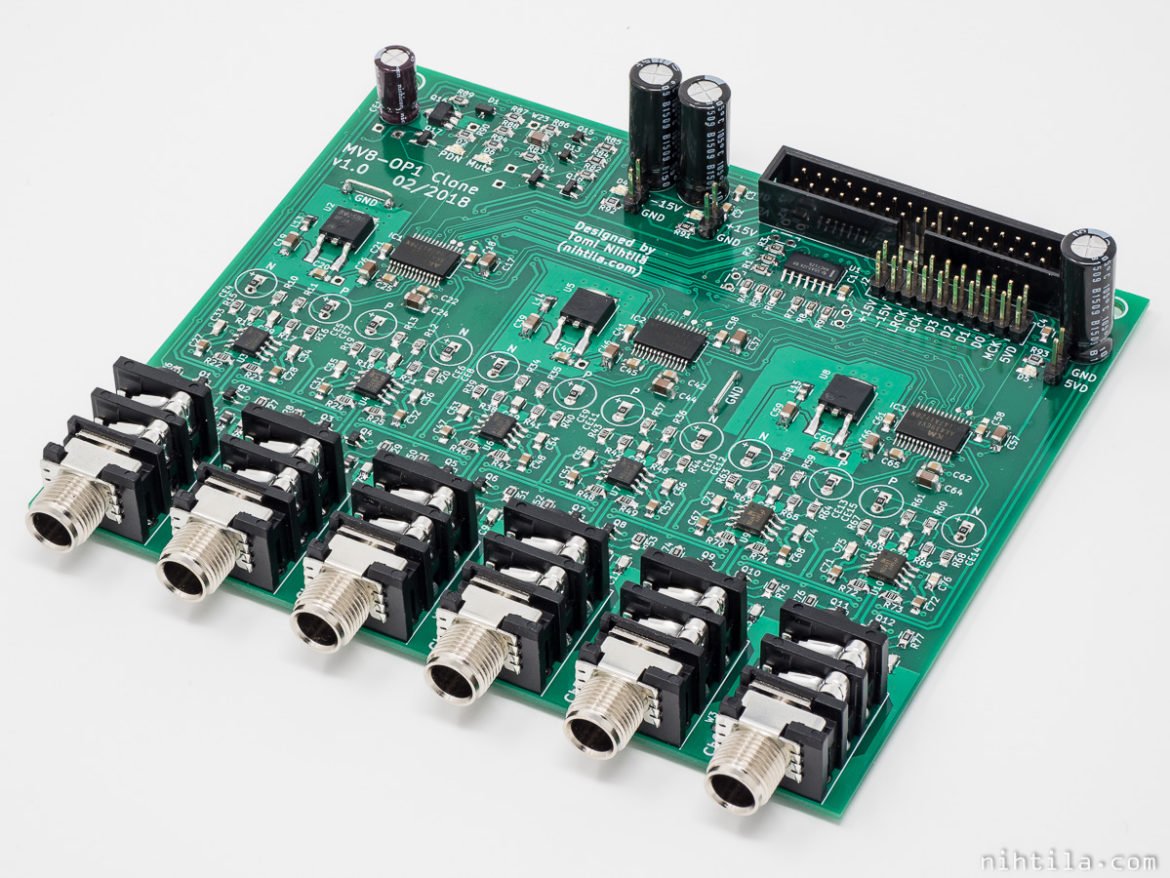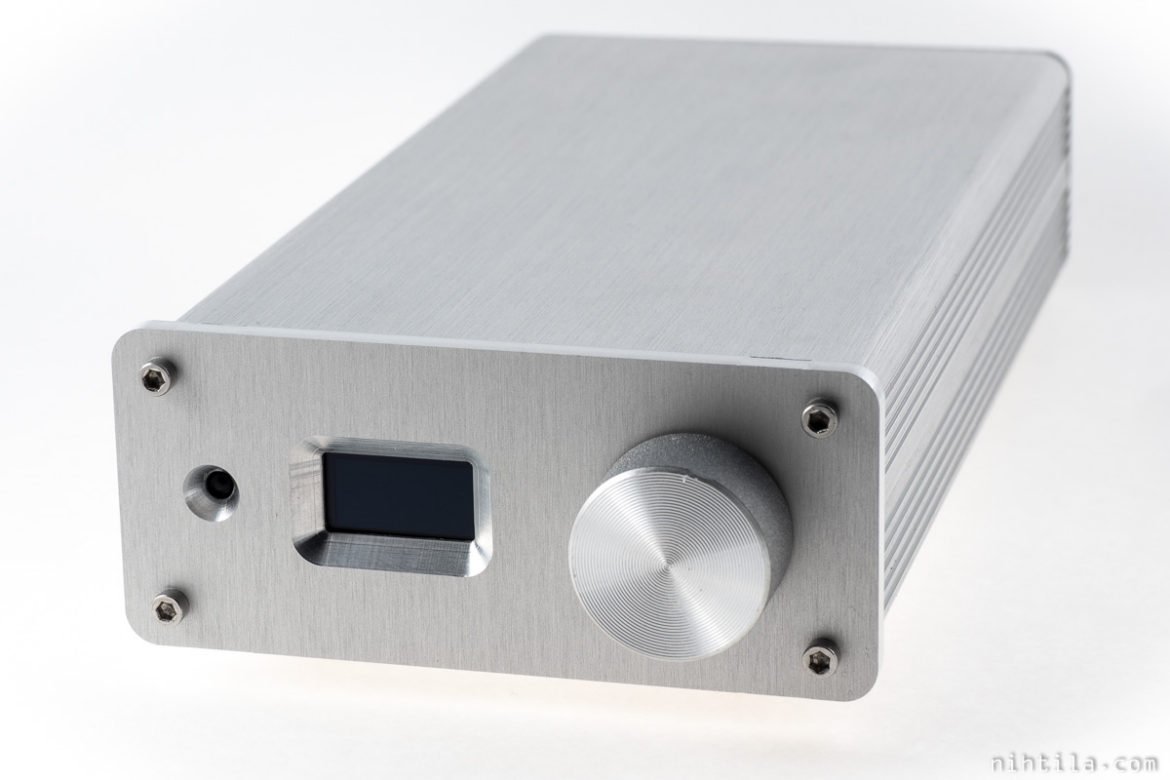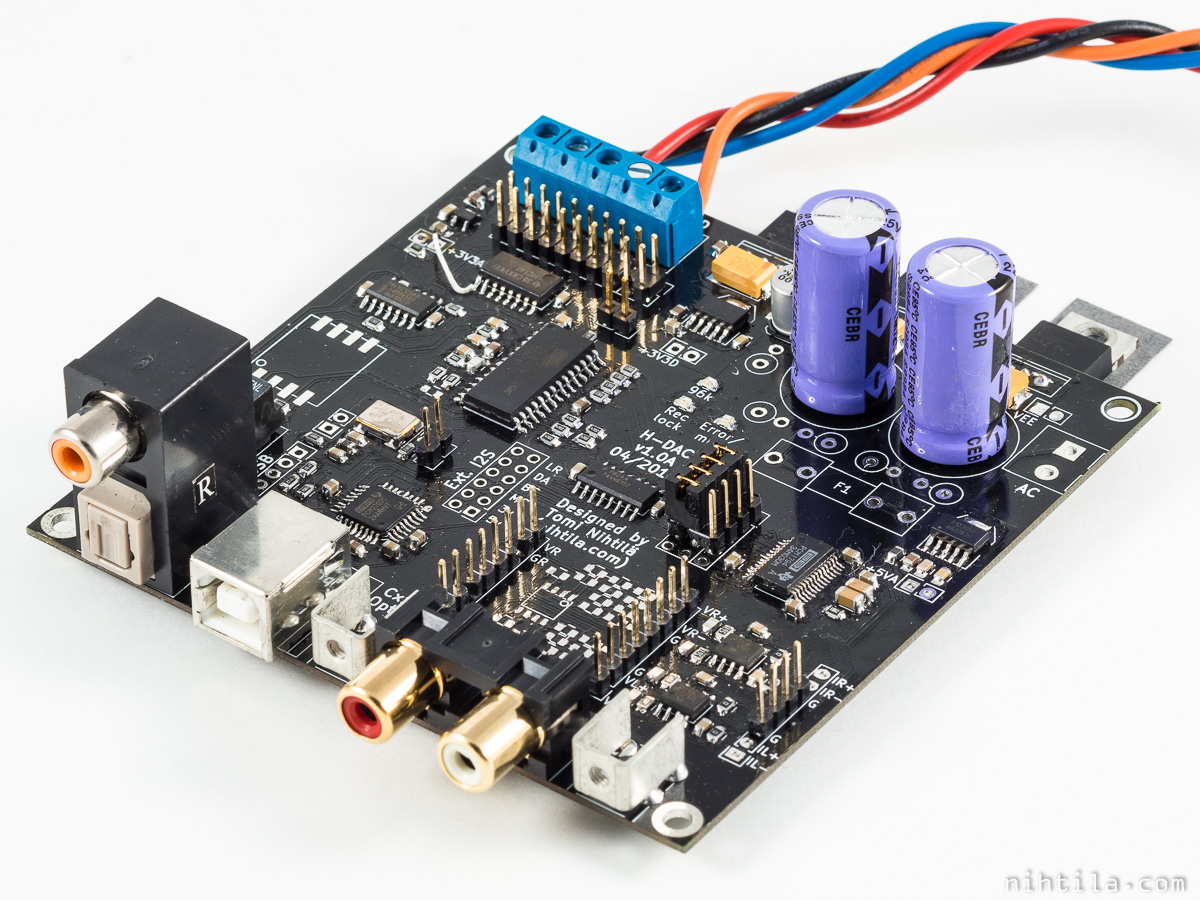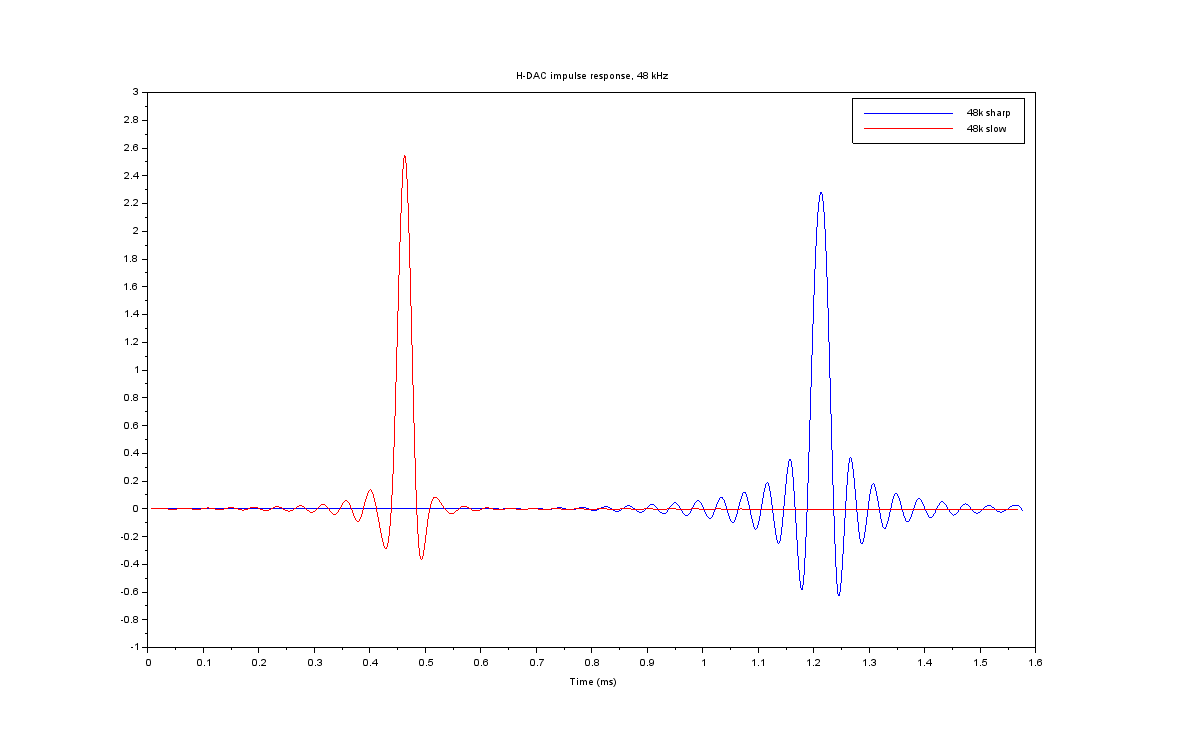Last year and this spring I spent a lot of free-time on DIY electronics and as my full-time job is also electronics related, I needed to take a few-month break. I just didn’t feel interested, inspired, or motivated anymore. During the time off I focused a bit more on my photography hobby. I hoped that after a break I would feel motivated to do more electronics again. While even I had my doubts, the inspiration is back! I am designing new boards again. There will be a new DAC plus addon boards; the design and ideas are based on the H-DAC. I will also try to make assembled boards available to buy at some point.
DAC
- 6-channel analog output module for Roland MV-8000/8800; mimics analog part of Roland MV8-OP1 module
- Digital signal and supply connector with identical pinout to the original
- Same output level as the original
- High performance
- SNR: 118 dB (A-weighted)
- THD+N ratio: -103 dB min, -93 dB max
- Crosstalk: -112 dB max
Simple USB audio interface for headset
- Based on PCM2912A reference design; single IC providing:
- USB-interface
- 2-channel DAC and headphone amplifier
- 1-channel ADC and microphone bias
- TRRS jack for headset, or headphones and microphone can be wired out separately
- CTIA or OMTP type jack can be selected with jumper link
- Not for higher end audio but perfectly adequate for gaming, podcasts, calls, etc.
This is an updated version of my old miniD preamp from 2014 combining miniDSP and 4-channel DAC-preamplifier
- Small 4-channel preamplifier with digital signal processor and digital-to-analog converter
- DSP can be used for crossover for 2-way speaker or between speaker and subwoofer, and/or digital room correction
- 4 digital SPDIF stereo inputs and one analog input
- 4-channel unbalanced analog output
- DSP-solution consists of ADAU1701-based miniDSP-board and applicable software
- Atmel AVR-based firmware with extensive features such as IR-remote, balance, offset for inputs and outputs, DSP bypass, selection between analog or digital volume control, etc.
- Main components: SRC4392 SPDIF-receiver and sample rate converter, miniDSP-board, PCM4104 DAC, OPA1662 op-amps and PGA4311 volume control
- Very high performance; measurement results with coaxial S/PDIF input:
- Output level: 2.0 Vrms
- Dynamic range / SNR: 122 dB (A-weighted)
- THD+N ratio: -103 dB (0 dBFS/1 kHz signal, 48 kHz sample rate)
- Crosstalk: -128 dB at 1 kHz, -112 dB at 10 kHz
- Supports S/PDIF, Toslink, USB, and external I2S inputs
- Unbalanced outputs (RCA) on board, balanced (XLR) addon available
- Hardware-controlled – no need for microcontroller (but one can be added with addon)
- Can be powered by AC or DC supply
- Addon available to transform H-DAC into preamplifier/headphone amp
- New output stage addons can be easily designed to experiment with components and circuits
- CS8416 S/PDIF-receiver, PCM1794A DAC, LM4562 opamps (or any SO-8 dual opamp), PCM2707C USB-audio, LM2940/LM2990, TPS73633, TPS79133, and REG103 regulators
H-DAC is a high-performance 192 kHz / 24-bit capable DAC board with TI PCM1794A DAC. The board has two coaxial S/PDIF, two Toslink, and one I2S input that can be either on-board 48 kHz / 16-bit USB receiver or an external I2S-device. Input selection and settings are controlled with jumper links that can be replaced by mechanical switches or microcontroller addon board.
Many DAC chips and devices using those chip have user selectable options for digital filter response to fine-tune tonal characteristics. I will take PCM1794A used on H-DAC as an example and see what effects these filter types have on impulse and frequency responses. This is just scratching the surface of the topic by briefly introducing some technical effects that can be measured. Tonal characteristics are not discussed here; those are highly subjective and a topic of another post (or debate).
